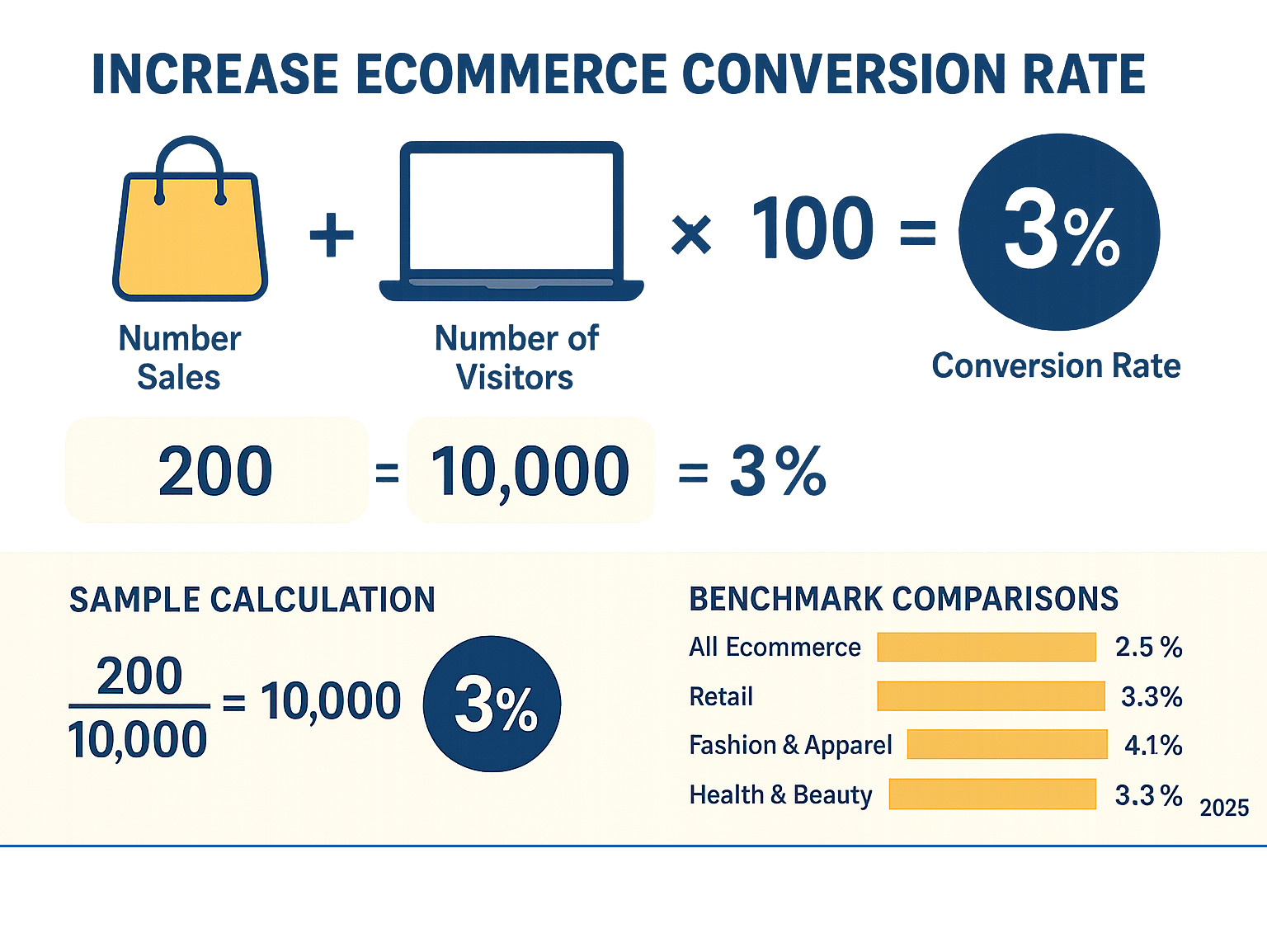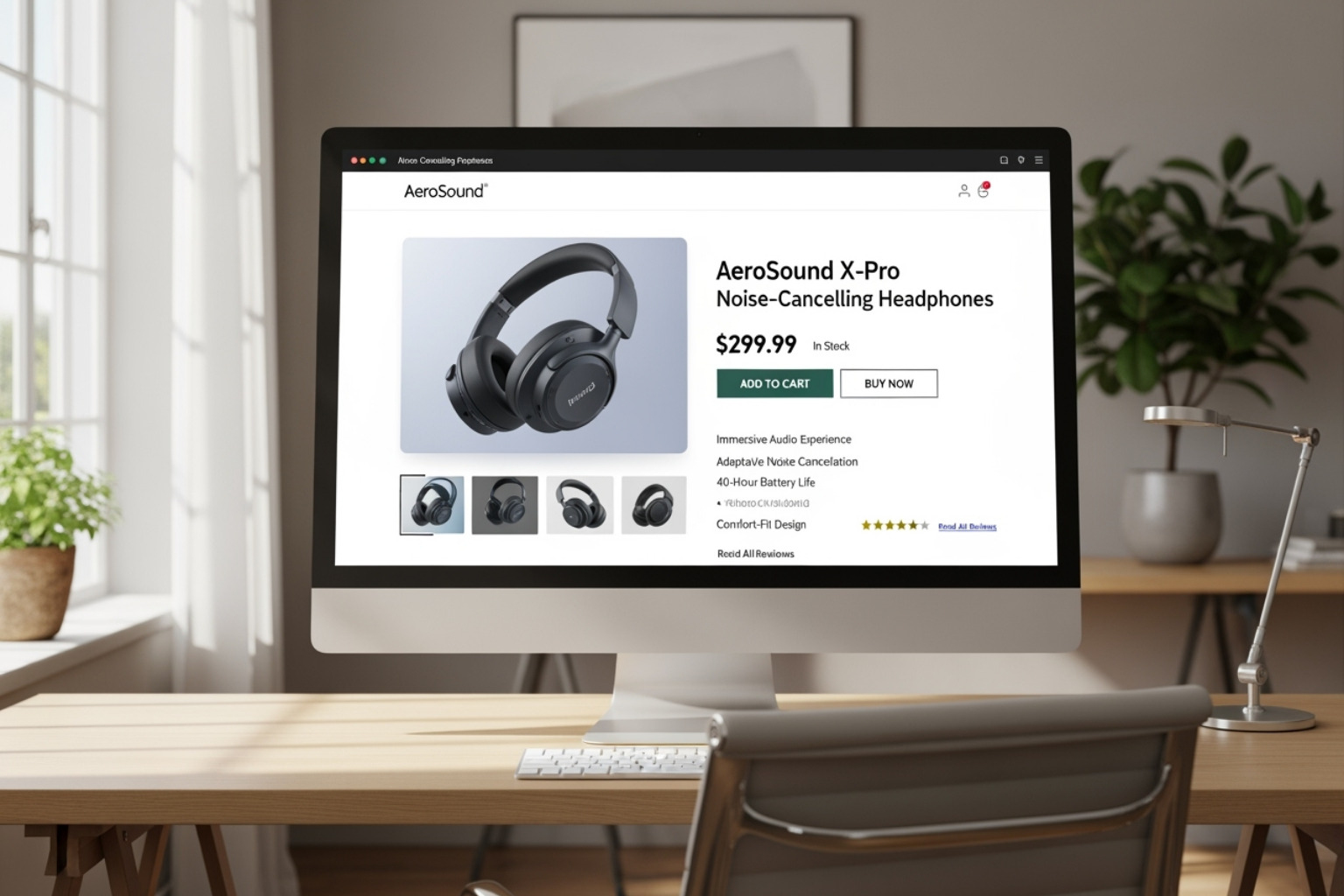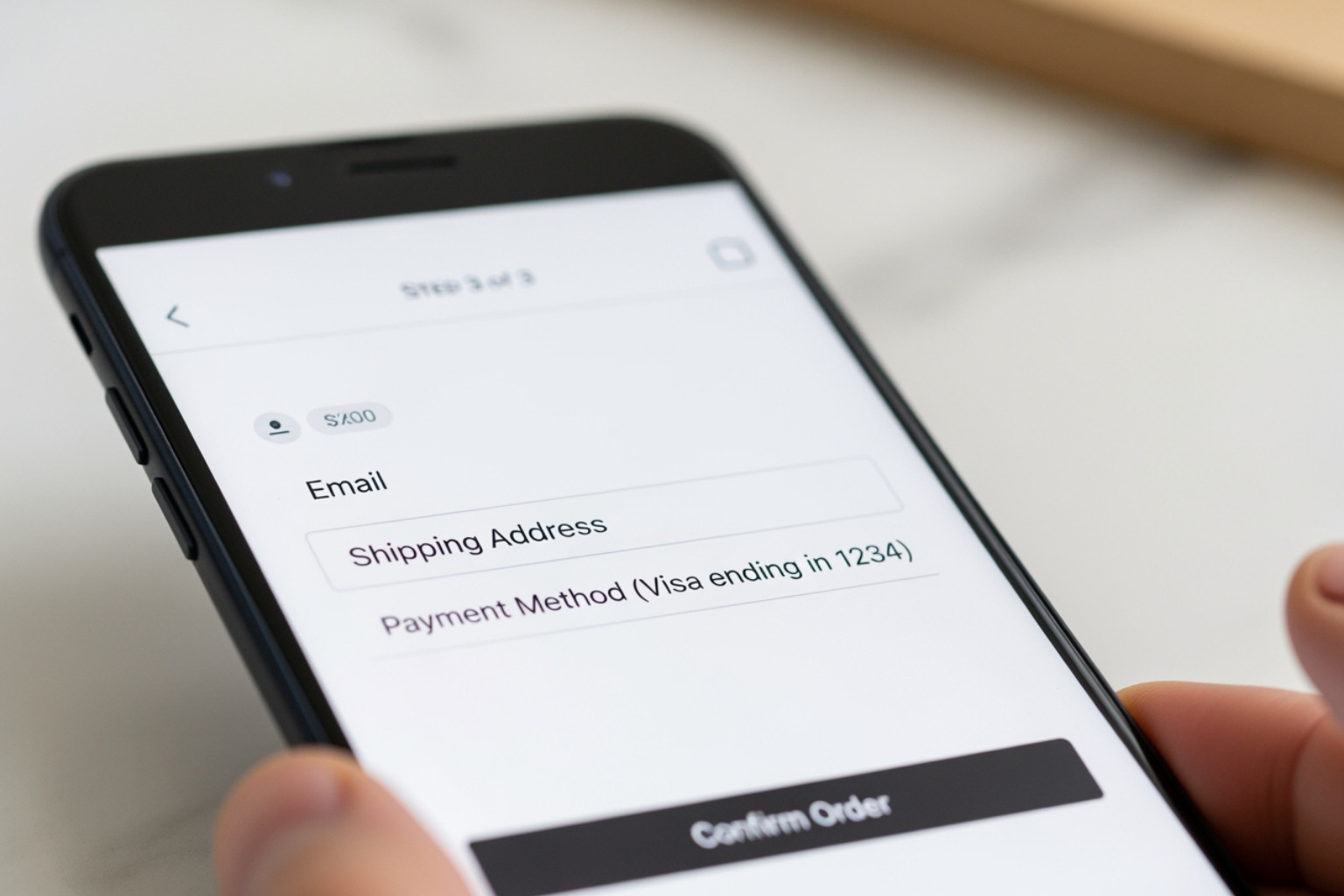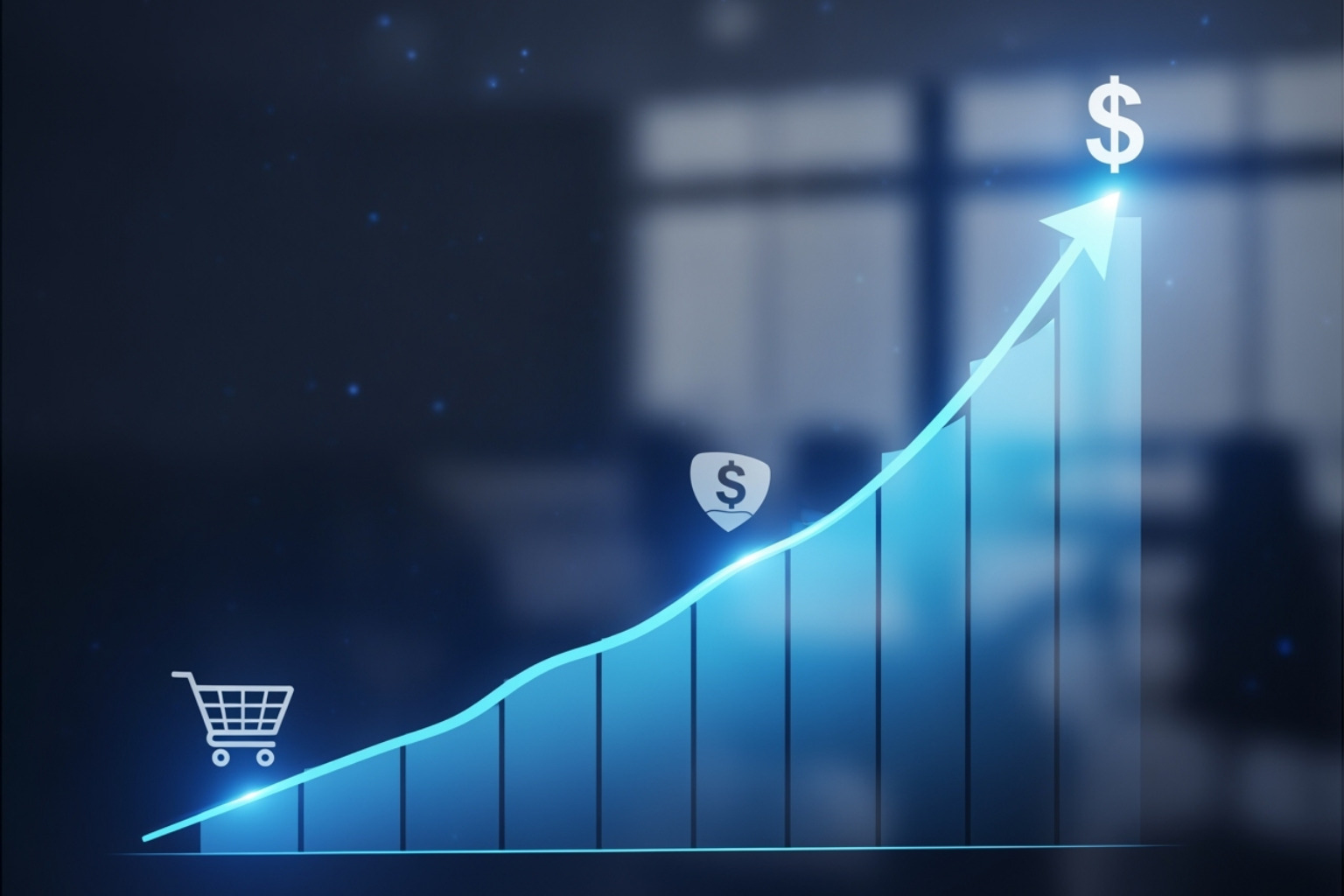Why Your Ecommerce Conversion Rate Is the Key to Business Growth
The best way to grow your online business without more ad spend is to increase ecommerce conversion rate. You can turn more visitors into customers by optimizing product pages, streamlining checkout, building trust, and focusing on mobile users.
Most ecommerce stores only convert 2-3% of visitors. But small improvements lead to big revenue gains. For example, with 10,000 monthly visitors, raising your conversion rate from 2% to 3% adds 100 sales—a 50% revenue increase from the same traffic.
Businesses often focus too much on traffic instead of converting existing visitors, but improving conversions is usually easier and more cost-effective.
I'm Steve Pogson, founder of First Pier. My team and I have spent over two decades helping Shopify stores increase ecommerce conversion rate with effective strategies that turn browsers into loyal customers.

Simple guide to increase ecommerce conversion rate terms:
Understanding Your Conversion Rate: The Starting Point
Before looking at strategies to increase ecommerce conversion rate, let's cover the basics. Your conversion rate shows how well you turn browsers into customers.
How to Calculate Your Ecommerce Conversion Rate
The formula is simple:
Conversion Rate = (Number of Sales / Total Number of Visitors) × 100%
For example, 160 sales from 8,000 visitors is a 2% conversion rate. You can also track "micro-conversions" like newsletter sign-ups to understand the customer's path. Track these numbers weekly to see trends. For more on defining a conversion, this resource is helpful. Our team at First Pier also offers Ecommerce Analytics Analysis services.
What's a Good Conversion Rate?
Most stores convert between 2.5% and 3%, but this varies by industry and audience. Gift stores might see 4-5%, while a store selling expensive electronics might have a 1.5% rate. Geography and device usage also play a role. Desktop shoppers usually convert more, but a great mobile experience is essential. You can find more details on conversion rate differences between gifts vs. electronics rates in this industry breakdown.
Key Metrics to Watch Besides Conversions
Other metrics help explain your conversion rate:
- Cart abandonment rate: The percentage of shoppers who add items to a cart but don't buy.
- Average Order Value (AOV): How much customers spend per order.
- Bounce rate: Visitors who leave after viewing only one page.
- Exit rate: The last page a visitor viewed before leaving. See Google's guide on Exit Rate.
- Average session duration: How long people stay on your site. Learn more from Google's docs on Average session duration.
These metrics reveal patterns to help you find the best changes to make.
Building a High-Converting Website Foundation
A well-organized site directs visitors smoothly toward a purchase, which is key to increase ecommerce conversion rate. Visitors make split-second decisions based on your site's design and usability.
Optimize Your Product Pages for Sales
Your product pages are where browsers become buyers.

- High-quality photos and videos: Use high-resolution images from multiple angles and videos to show products in action.
- Detailed product descriptions: Focus on benefits, not just features. Use bullet points to make text scannable.
- Unique Selling Proposition (USP): Clearly state what makes your product special (e.g., sustainably made, hand-crafted).
- Clear calls-to-action (CTAs): Make "Add to Cart" buttons easy to find and visually distinct.
To learn more about creating product pages that convert, check out more info about Ecommerce UX Design services.
Make Your Website Fast and Easy to Use
Site speed and usability are essential. Over half of mobile users will leave a site if it takes more than three seconds to load.
- Mobile-first design: Your site must work perfectly on smartphones. Design for small screens first.
- Simple navigation: Use an intuitive structure with clear categories so customers can find products in a few clicks.
- Effective site search: Ensure your search bar delivers relevant results quickly, even with misspellings.
For help with Shopify speed and usability, learn more through our Shopify Development services.
Use Social Proof to Build Credibility
Social proof helps build trust and increase ecommerce conversion rate.
- Customer reviews: They are very powerful and can increase conversion rates by as much as 270%.
- Testimonials: These add a personal touch, especially with customer photos.
- User-generated content (UGC): Customer photos and social media posts build authenticity.
For a complete roadmap, see my CRO Checklist for Shopify.
The Final Hurdle: Optimizing Your Checkout and Building Trust
The checkout is where many sales are lost. A smooth, trustworthy process is critical to increase ecommerce conversion rate.
Create a Smooth and Secure Checkout
A complicated checkout causes cart abandonment. In fact, 87% of consumers abandon carts due to a complicated checkout.

To fix this:
- Keep form fields to a minimum. Only ask for essential information.
- Offer a guest checkout option. Don't force account creation.
- Use progress bars to show customers where they are in the process.
- Accept multiple payment methods, including digital wallets like Apple Pay and "Buy Now, Pay Later" options.
My Shopify Conversion Checklist covers all these points.
Show Shoppers Your Site is Trustworthy
Customers won't buy if they don't trust your site. Build trust by being transparent.
- Display security badges like SSL certificates and payment logos (Visa, PayPal). 18% of shoppers abandon carts over trust concerns.
- Have a clear return policy. Make it easy to find, as 11% of buyers abandon orders due to a poor policy.
- Offer free shipping. 50% of cart abandonments are due to extra costs like shipping.
- Make contact information prominent. A phone number and address show you're a real business.
These trust signals can significantly increase conversion rates.
Smart Marketing Tactics to Increase Ecommerce Conversion Rate
With a solid website, use smart marketing to bring customers back and direct them toward a purchase.
Use Personalization and Targeted Communication
Personalization works: almost 90% of personalization efforts result in a positive ROI.
- Personalized CTAs: Instead of "Buy Now," try "Complete Your Order for [Product Name]." These are 202% more likely to convert.
- Email capture pop-ups: Offer a discount for an email to stay in touch with visitors.
- Abandoned cart emails: A friendly reminder can recover many lost sales.
- Live chat and chatbots: Provide immediate answers to simple questions. 69% of consumers prefer them for speed.
For more ideas, explore our Email & SMS Marketing services.
Create Compelling Content and Offers
Good content and offers build trust and create urgency, helping to increase ecommerce conversion rate.
- Helpful blog content: Write about topics that matter to your audience to build trust and show expertise.
- Sense of urgency: Use limited-time offers and "low stock" alerts to motivate action.
- Discount codes: These are great for first-time buyers. Learn to set up effective discount codes.
- Clear, action-oriented CTAs: Use calls to action like "Shop Now" to make the next step obvious.
For complete strategies for Shopify, see how to Increase Conversion on Shopify Store.
Continuously Improve with Testing and Analysis
To increase ecommerce conversion rate requires ongoing testing. The most successful businesses constantly improve their websites.
Tools for Analyzing and Improving Your Store
Data tells you what's working. The key is using the right tools to understand visitor behavior.
- Google Analytics: Understand where visitors come from, what they do, and where they leave.
- Heatmaps and session recordings: Tools like Lucky Orange or Hotjar show how users interact with your pages, revealing clicks, scrolls, and points of frustration.
- A/B testing software: Test different versions of a page to make data-backed decisions.
For help acting on these insights, check out our Improving Conversion Rates services.
How to use A/B testing to increase ecommerce conversion rate
A/B testing means trying two versions of an element (like a headline or button) to see which performs better. It takes the guesswork out of optimization.
What should you test?
- Calls-to-action (CTAs): Test different colors, text, or sizes.
- Headlines: Try different ways of explaining what makes your product great.
- Product images and descriptions: Test different styles and formats.
- Checkout process: Test reducing form fields or offering guest checkout.
The process is simple: come up with an idea to test, create two versions, split traffic, and measure results. For ideas, check out these A/B testing new ideas. Every test teaches you something.
Frequently Asked Questions about Increasing Conversion Rates
Here are answers to common questions about how to increase ecommerce conversion rate.
What are the most common mistakes businesses make?
The biggest mistakes include:
- Focusing only on traffic: It's better to convert the visitors you already have.
- Ignoring mobile users: A poor mobile experience loses customers.
- A complicated checkout: 87% of shoppers abandon carts if the checkout is too complex.
- Hiding shipping costs: 50% of cart abandonments are due to extra costs like shipping.
- Not using data: Make decisions based on analytics, not gut feelings.
How important is free shipping for conversions?
It's often the deciding factor. With 50% of cart abandonments caused by extra costs, it's a powerful tool. It also encourages shoppers to spend more to qualify for it. The higher conversion rate often makes it worthwhile.
Can I do conversion rate optimization myself?
Yes, you can start with the basics like improving photos and simplifying your checkout. However, for complex A/B testing and technical fixes, an expert can help. My team at First Pier specializes in CRO Shopify strategies. We can help you find hidden opportunities and get results faster.
To Sum Up: Turning Visitors into Loyal Customers
Working to increase ecommerce conversion rate is about building a sustainable business. Small changes bring big results; moving from a 2% to a 3% conversion rate means 50% more sales from the same traffic.
Here's a recap of the key strategies:
- Understand your data: Use analytics to see where visitors are leaving.
- Optimize your site: Create great product pages, a smooth checkout, and a fast site.
- Build trust: Use reviews, security badges, and clear policies.
- Test and refine: Use A/B testing to learn what your customers prefer.
At First Pier, we've helped Shopify stores turn browsers into loyal customers for over two decades. Our team knows what makes customers click "buy now." The goal is to build systems that continuously improve your results, leading to more sales and happier customers.
If you're ready to see real results, we'd love to help. You can learn more info about our award-winning Shopify ecommerce agency and see how we've helped businesses like yours.








